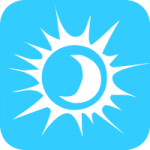 On this page, you will be able to find your free 2020 Solar Calendar which indicates the times of sunrises, sunsets and the total amount of daylight hours throughout the year 2020. Available now, Solar Calendars for previous and upcoming years can be found in the Astronomy Calendars section.
On this page, you will be able to find your free 2020 Solar Calendar which indicates the times of sunrises, sunsets and the total amount of daylight hours throughout the year 2020. Available now, Solar Calendars for previous and upcoming years can be found in the Astronomy Calendars section.
The 2020 Solar Calendar can be used to predict the number of daylight hours in the course of the year, the times at which the sun both rises and sets, the progression of the seasons as well as the longest and shortest days in 2020.
Simply indicate the location and date you wish the Solar Calendar to calculate and your very own 2020 Solar Calendar will be displayed. By comparing the 2020 Solar Calendar together with the 2020 Lunar Calendar, further astronomical events and occurrences, like Lunar or Solar Eclipses can also be predicted.







